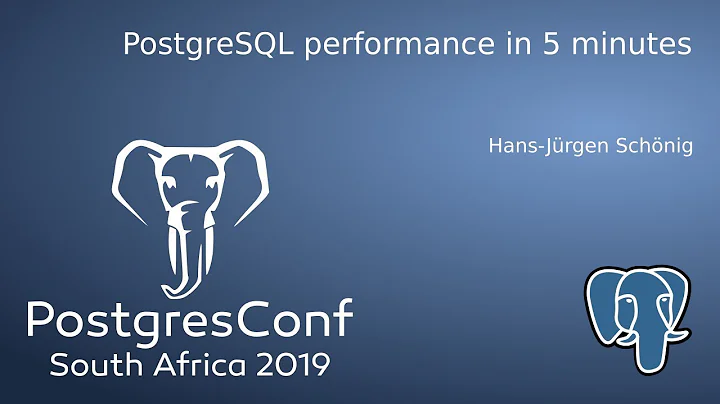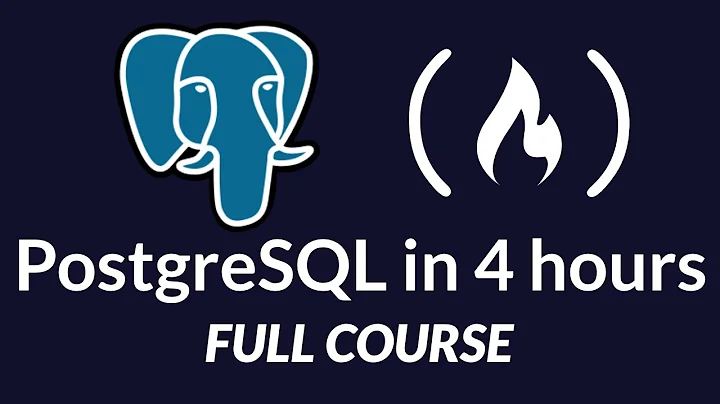Author: Chen Jun Compile Source: 51CTO
- PostgreSQL is the world's fourth largest popular open source database management system, which has been widely used in various scale applications. The traditional method of managing databases is to use command line interface (CLI) tools. However, this type of method has the following problem: it takes a lot of learning time to fully master the DBMS.
- The console display is not friendly, and can only provide a small amount of information at a time.
- It is difficult to browse, check, index, and monitor various databases and tables through a simple console interface.
In contrast, PostgreSQL’s graphical user interface (GUI) tools can help users better manage, manipulate, and visualize the database. Specifically, it includes the following five aspects:
- not only allows new users to get started quickly, but also provides various shortcut keys to skilled users.
- Excellent visualization effect to help users understand their data.
- can be remotely accessed or navigated to another database server.
- easily manage PostgreSQL data through a window interface.
- Conveniently access various files, functions, and operating systems.
It can be seen that the PostgreSQL GUI tool reduces the burden on developers while increasing their productivity. Below, we will discuss with you five GUI tools for managing PostgreSQL deployment.
1. pgAdmin(https://www.pgadmin.org/)

8b0f0Admin#04a7pg It is the first PostgreSQL GUI tool. It supports all PostgreSQL operations and functions, and is free and open source. Whether you are a novice, an experienced DBA, or a developer, you can manage the database through pgAdmin.
Advantages:
- can create, view and edit all common PostgreSQL objects.
- provides graphical query and scheduled tasks with syntax highlighting.
- Its dashboard allows you to monitor various server activities including database locks, connected sessions, and ready transactions.
- Because pgAdmin is a web application, you can deploy it to any server and access it remotely.
- pgAdmin UI provides a variety of detachable panels, which you can rearrange according to your preferences.
- Its programming language debugger can help you debug your code. The portable version of
- pgAdmin allows users to easily move data between machines.
Disadvantages:
- Compared with other paid GUI tools, its UI is slower and not intuitive.
- pgAdmin consumes more system resources.
pgAdmin can be installed locally on Windows, Linux and Mac OS for use. Users can download it from the official website of pgAdmin - https://www.pgadmin.org/download/. Since it is designed for PostgreSQL, each version of it will be updated with new features.
Cost: Free (open source)
2. DBeaver(https://dbeaver.io/)

DBeaver is a favorite among developers and database administrators The cross-platform PostgreSQL GUI tool. Although not the native GUI of PostgreSQL, DBeaver supports all popular databases, including: MySQL, MariaDB, Sybase, SQLite, Oracle, SQL Server, DB2, MS Access, Firebird, Teradata, and Derby.
Advantages:
- The visual query builder can help you construct complex SQL queries without having to master too much SQL-related knowledge.
- can use multiple data views to support different user needs.
- provides convenient data navigation.
- In DBeaver, you can generate pseudo data that is similar to the real one for testing the system.
- provides full-text data search for all selected tables and views, and can display search results as filtered tables and views.
- can search for metadata between rows in each database system table.
- can import and export data in CSV, HTML, XML, JSON, XLS, XLSX and other file formats.
- improves the security of the database by storing the password in the storage area protected by the master password.
- can automatically generate ER diagrams for the database and its institutional model.
- Its enterprise version provides a special online support system.
Disadvantages:
- Compared with some expensive GUI tools (such as Navicat and DataGrip), it may be slower when processing large data sets.
You can run DBeaver on Windows, Linux and Mac OS. It has two versions, free and enterprise. You can purchase a standard license for the Enterprise Edition for $149. However, for most companies, the free version is sufficient. Moreover, most DBeaver users feel that its free version is better than pgAdmin.
Cost: The community version is free, the standard enterprise version is US$149.
3. Navicat(https://www.navicat.com/en/products/navicat-for-postgresql)

Navicat is an easy-to-use graphical tool for both beginners and experienced people. It supports multiple database systems such as MySQL, PostgreSQL, and MongoDB. Navicat can work with cloud databases such as Amazon Redshift, Amazon RDS, Amazon Aurora, Microsoft Azure, Google Cloud, Tencent Cloud, Alibaba Cloud, and Huawei Cloud.
Advantages:
- Navicat has a very intuitive and fast UI. You can use its visual SQL builder to easily create and edit SQL statements. At the same time, its powerful code automatic completion function can save developers a lot of code time and avoid the possibility of errors.
- Navicat comes with powerful data modeling tools that can be used to change or even design the entire visual database structure from scratch. You can intuitively operate all types of database objects through the diagrams it provides.
- Navicat can run various scheduled tasks and notify the administrator in time when the job is completed.
- Navicat can synchronize different data sources and structures.
- Navicat Cloud, an additional function of Navicat, can provide project-based team collaboration.
- Navicat uses SSH tunnels and SSL connections to ensure that each connection is safe, stable and reliable.
- You can import or export data to Excel, Access, CSV and other formats.
Disadvantages:
- Its license has platform unity. You need to purchase different licenses for PostgreSQL and MySQL. Small companies or freelancers may not be able to afford this high price.
- It takes a while for novices to understand its rich functions.
You can use Navicat in Windows, Linux and Mac OS environments. Navicat's well-known customer groups include: Apple, Oracle, Google, Microsoft, Facebook, Disney and Adobe. Navicat provides three versions: Enterprise Edition, Standard Edition and Non-Commercial Edition. Among them, the price of the enterprise version is US$239, the price of the standard version is US$159, and the price of the non-commercial version is US$89. You can get the complete price information through the link: https://www2.navicat.com/en/store/navicat-for-postgresql, and through the link: https://www.navicat.com/en/ download/navicat-for-postgresql, download the 14-day trial version of Navicat.
Cost: Single license ranges from USD 89 to USD 239
4. DataGrip(http://jetbrains.com/datagrip/)

DataGrip is a cross-platform integrated development environment (IDE) that supports multiple database environments. It is developed by the big brand JetBrains. Other products of the brand also include: PhpStorm, IntelliJ IDEA, PyCharm, and WebStorm, and their IDE performance is very good.
Advantages:
- Its context awareness and pattern awareness capabilities can promote automatic code completion.
- Through its beautiful and customizable user interface and intelligent query console, you can track various activities without losing any jobs. At the same time, you can also use its powerful editor to easily add, delete, edit and clone data.
- uses multiple methods to navigate various tables, views, and processes.
- can detect errors in the code in time and provide the best solution.
- DataGrip provides an advanced reconstruction process. When renaming variables or objects, it can automatically resolve various references.
- In addition to being a GUI tool for PostgreSQL, DataGrip can also provide a full range of IDEs for services such as version control systems.
Disadvantages:
- Because it is not a native tool of PostgreSQL, it is not convenient to debug various errors, and it cannot display all errors. The learning curve of
- is relatively "steep" and the threshold for beginners is relatively high.
- compare system resources that consume RAM.
DataGrip supports various large database management systems including: SQL Server, MySQL, Oracle, SQLite, Azure database, DB2, H2, MariaDB, Cassandra, HyperSQL, and Apache Derby. DataGrip also supports Windows, Linux and Mac OS, the three main operating systems. DataGrip provides two different pricing for organizations and individuals. For organizations, you can refer to: https://www.jetbrains.com/datagrip/buy/commercial?billing=yearly, the fee for the first year is US$199, the next year is US$159, and the third year and beyond are 119 Dollar. The first-year package price of its personal edition is $89. You can download its 30-day free trial version through the link: https://www.jetbrains.com/datagrip/download.
Cost: ranging from 89 to 199 US dollars per year
5. OmniDB(https://omnidb.org/en/downloads-en)

OmniDB, an open source tool mainly sponsored by 2ndQuadrant, allows you to add, edit and manage data in a unified work area, and obtain other necessary functions. Although OmniDB supports other database systems such as MySQL, Oracle and MariaDB, its main support target is PostgreSQL. OmniDB supports Windows, Linux and Mac OS X, three major mainstream platforms.
Advantages:
- You can easily configure by adding and deleting connections.
- Its intelligent SQL editor can help you write SQL code through automated functions and syntax highlighting functions.
- OmniDB provides complete debugging functions for PostgreSQL functions and procedures.
- You can customize the monitoring dashboard and learn the real-time information of the relevant database from the displayed chart.
- By querying various visualized scheduled tasks, you can find potential bottlenecks in SQL queries.
- Different computers can access OmniDB in encrypted form.
- Developers can add and share new functions through plug-ins.
Disadvantages:
- Compared with pgAdmin and DBeaver, OmniDB lacks community support. Therefore, this creates some obstacles for users to learn and answer questions.
- OmniDB is not as rich as the paid versions of Navicat and DataGrip.
You can download OmniDB from the link: https://omnidb.org/en/downloads-en. Most users have rated it well.
Cost: Free (open source)
Summary
In summary, users generally use pgAdminTo start PostgreSQL. It has strong community support and abundant resources. Therefore, as a most popular GUI tool, pgAdmin can meet the various needs of developers in most cases.
If you pursue a better UI and a visual editor, then DBeaver and OmniDB as open source solutions will be your ideal choice.
If you are looking for more features than open source tools, and are willing to pay a high price for this, then Navicat and DataGrip are the best GUI products on the market.
is supplemented by other popular PostgreSQL GUI tools on the market, including: Valentina Studio, Adminer, DB visualizer and SQL workbench. I believe there is always one suitable for you.
Original title: Which Is the Best PostgreSQL GUI 2019 Comparison, Author:? Kristi Anderson
![How to Install PostgreSQL 15 on Windows 10 [ 2023 Update ] Complete guide | pgAdmin 4 - DayDayNews](https://i.ytimg.com/vi/0n41UTkOBb0/hq720.jpg?sqp=-oaymwEcCNAFEJQDSFXyq4qpAw4IARUAAIhCGAFwAcABBg==&rs=AOn4CLAbth98kdTcaA7AqyarU48QkdoJvQ)
![How to Install PostgreSQL 15 on Windows 10 [ 2023 Update ] Complete guide | pgAdmin 4 - DayDayNews](https://cdn-dd.daydaynews.cc/img/play.svg)



















